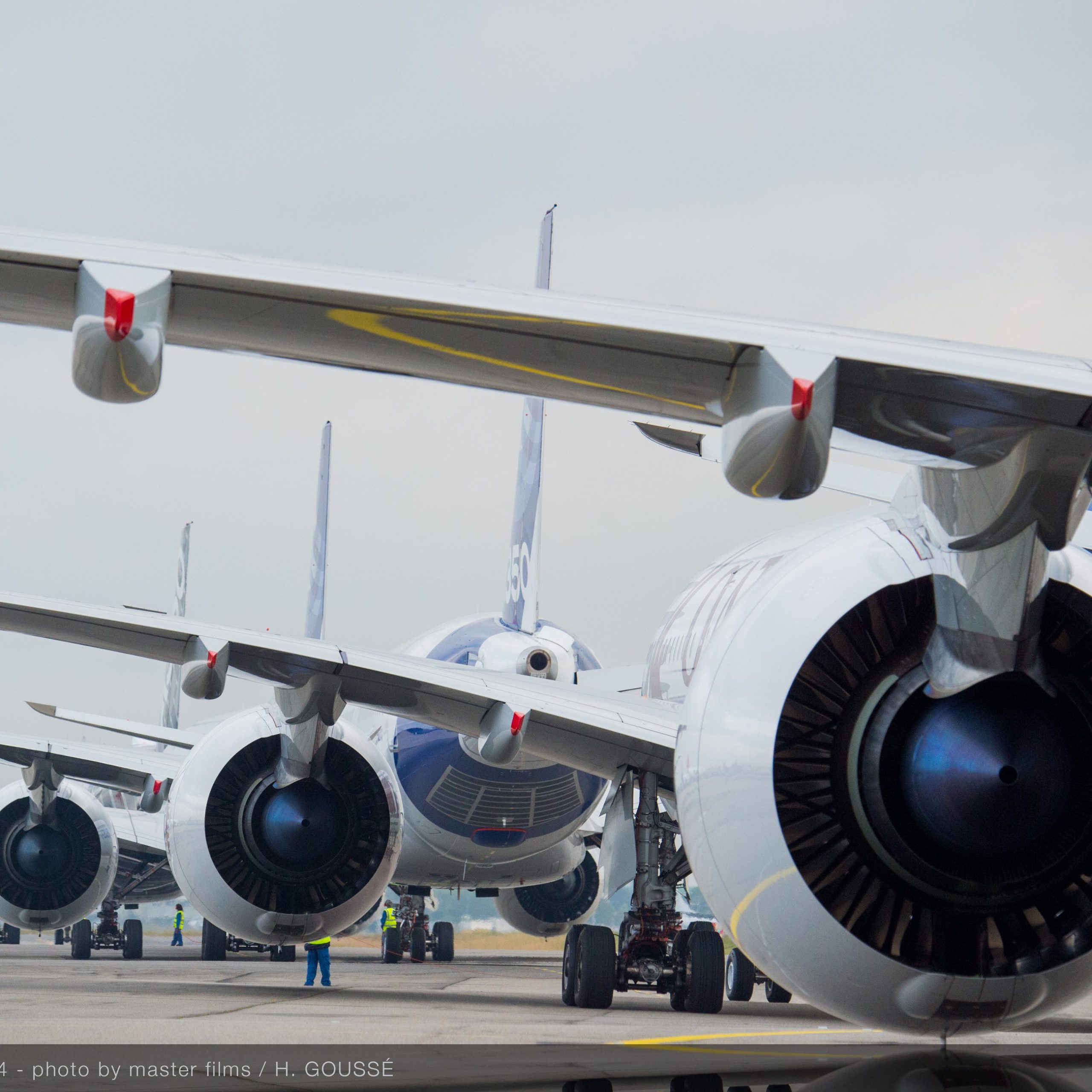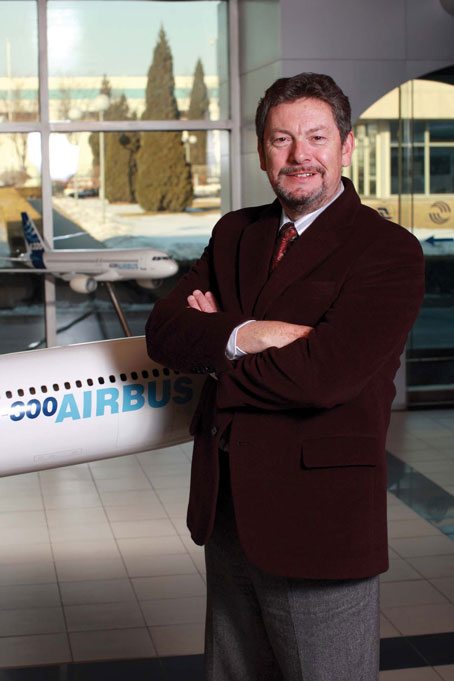
Laurence Barron, Chairman of Airbus Group China, on the company’s growth in China’s expanding aviation sector
In China, the aerospace and aviation industries continue to soar higher and higher as its citizens increasingly take to the sky for business and leisure, both domestically and internationally. Playing a key role in enabling that boom has been the Airbus Group, which officially established itself in the country in 1994, and today China vies with the US for top spot as the group’s largest single market.
Just as China has changed, so too has the company. Formerly the European Aeronautic Defence and Space Company (EADS), in January 2014 the group underwent a reorganization, bringing consistency, integration and a stronger brand to its divisions—Airbus (responsible for aircraft), Airbus Helicopters and Airbus Defence and Space—and in the same month Laurence Barron became Chairman of the newly rebranded entity in China.
Having previously acquired experience of Asia while working in Japan in the 1980s, Barron arrived in China in 2004, a country he describes as “a place that really is moving and shaking”. This was just as Airbus’ business really began kicking into high gear, and it now has 50% of the in-service fleet.
In this interview, he explains the need to develop local talent and stresses the importance of the Chinese industry to the company’s business, which shouldn’t come as a surprise.
Q. What have the main challenges been when it comes to manufacturing in China, and how has Airbus Group addressed these issues?

A. The main challenge in manufacturing anywhere other than your home base is people: finding the right people, then making sure that they have the right technical training so they can do the job properly.
Another concern specific to China is that in order to achieve that, particularly the training part, we need to bring in quite a number of expatriates, and that’s very expensive. So you need to have a plan to get ‘rid’ of them. Bring them in to do the job, but not to keep them here permanently, to make sure they train the local hires to the level at least equivalent to what we achieve in our factories [at] home, and then let the expatriate return so that the extra cost part is limited in time.
Q. Airbus Group maintains partnerships with Chinese companies across many of its operations. What has your experience been working with such a range of companies across so many different areas?
A. It’s taught us that it’s not a question of one size fits all. We have effectively very different partners with very different projects, and you have to make sure that you get the right partner. We’ve had, generally speaking, quite good success. We have a joint venture (JV) with China Aviation Supplies, which was set up in the mid-90s, which is a training center and a support center, mainly for storage and distribution of spare parts. That was very successful—in fact… we extended it for another 20 years. Often JVs don’t get renewed or they fail or one partner buys out the other, and in this case it’s going to be a minimum of 30 years, which is a proof of a successful JV.
Another excellent example is our final assembly line in Tianjin, where we have two partners: AVIC (Aviation Industry Corporation of China) and the Tianjin Free Trade Zone, and Tianjin Free Trade Zone has been a really excellent partner for our project there, which has been highly successful.
Airbus Helicopters, they develop the EC175 on a co-development basis with AVIC up in Harbin, and that’s not a JV, it’s a co-development, each side does their own work. Last year they also signed the co-production agreement for the first 1,000 machines. Then with Defence and Space, we have a joint venture in Beijing that’s called Beijing Spot Image… that’s with a subsidiary of the Chinese Academy of Sciences.
You have to have a partner who is bringing the right things to the table, and as we have different activities, you have to choose according to the activity and make sure there’s a sufficient amount of common interest that the JV will be durable.
Q. There has been tremendous growth in aviation in China. How much longer can that continue and what is your prediction for the growth in the number of aircraft that Airbus will sell in the next few years?
A. Our forecast for the next 20 years for China is over 5,300 new aircraft. When I say new aircraft, we’re talking about mainland China and aircraft of 100 seats or more because we ourselves don’t study the regional market. [That] splits into over 3,500 single-aisles, so that’s A320-type aircraft, or A320 family, almost 1,500 twin-aisles, so we’re talking about wide-bodied aircraft like A330 and the A350, and over 300 very large aircraft, so we’re talking about A380-sized aircraft. Basically, we’re saying there’s still a lot to come. Because today you have to compare that to an in-service fleet of aircraft over 100 seats, today of around 2,200, of which we have 1,100 and Boeing has 1,100.
Q. What proportion of Airbus’ global business do you think will come from China in the next five to 10 years?
A. That’s difficult to say exactly. The trend for the last five years has been that over 20% of all our deliveries over each of the last five years have come to mainland China. If we be a little bit more precise, in 2014 it’s over 150 aircraft, so nearly 25% of our overall production last year came to China. We would expect China to remain one of our biggest if not the biggest single market in the years to come. I believe [that China] represents around 17% of our global forecast. Take those numbers, those percentages and we’re looking at China becoming the largest single market in the next 10 years. It’s already number one for us alternately with the US. It depends on how many deliveries there are each year to China and to the US, but in 2012 it was number one, in 2013 it was the US, and [in 2014] I don’t know what the US number is, but it’s going to be one or two.
Q. Despite this growth, do you think there are nonetheless some things that are holding it back in some way?
A. Sure, there are many things here that have basically struggled to keep up with the fast pace of development—the market has been growing in double digit figures for many, many years, and that’s put a lot of things under strain. The number one question [is pilot shortage]. There is effectively a constrained airspace. The need to update air traffic management. Airports, well that’s being addressed because there are so many additional airports or extended airports being built.
Q. Airbus has grown its in-service market share considerably since the 1990s. What would you attribute that to, and how are you trying to make sure that you can grow it even further?
A. The answer is the three Ps—product, people and production. So product, there’s no doubt that both the A320 family and the A330 have been extraordinarily popular here in China. If you fly [from Shanghai to Beijing], you [are] almost certainly flying an A330, irrespective of the airline. We all thought that yes, we had a better product with the single-aisle A320 family… but nobody anticipated the extraordinary development of the A330 fleet here. It is just about the ideal aircraft for most of the Chinese big airlines because they use it domestically, regionally and internationally.
People, I do believe we have had for very many years now a very efficient group of people here at Airbus China, and very stable—we haven’t had a change in leadership every two or three years, we have a very low turnover in staff compared with most foreign companies, less than 5%.
And then production, what I mean by that is our industrial cooperation strategy, which has been to significantly increase our industrial footprint here in China, which of course is what the central authorities want to see because the civil aviation industry here is underdeveloped. So we’ve substantially increased our subcontracting… we’ve gone way beyond just the build to print type of subcontracting that we were doing when I arrived here 11 years ago. We have major components made here, such as the wings—A320 wings are made in Xi’an and now delivered complete to the final assembly line in Tianjin where they’re equipped. In terms of aerostructure, [the wing] is the most complex part of the airframe to make, so it’s not just making the nuts and bolts. Our final assembly line just in December celebrated [its] 200th delivery, and I think it’s served as a model for us now [in] creating a fourth final assembly line center in Alabama in the US for the Americas. It’s interesting that China should lead the way. All of these initiatives have allowed us to draw level with our competitor [Boeing], and then exceed them, which is obviously in the interests of [the] Chinese aerospace industry, and therefore in harmony with what the central government wants to see.
Q. You said that you have a very low turnover rate. How does the Airbus Group manage to retain people and maintain that continuity? Also, how important is it to develop local talent here?
A. It’s extremely important to develop local talent. We have for many years now had a program in place to develop our best local hires and even send some of them for extended periods of time (1-3 years) to Toulouse to make sure they develop their own network in the company and become Airbus people through and through, so that when they return here they replace expatriates who are coming to the end of their expatriation. That is one way you retain people. If the Chinese staff here perceive that all the senior positions were always occupied by expatriates, then the best ones would eventually leave to go and work somewhere else where they have a better chance of promotion. We have a number of Chinese managers now. Then I think we have an exciting business, people like to work in our business—it’s a little bit more exciting than, say, manufacturing shoes—and HR keeps a very close eye on remuneration and benefits, benchmarking companies in similar industrial areas, so that we don’t fall behind and then we have people who are dissatisfied with their conditions. I mean, aerospace is not a place you get rich, aerospace doesn’t pay particularly well, but we need to make sure we’re at least competitive with our peers.
Q. Could Chinese-produced aircraft be a threat to Airbus down the road?
A. China is coming from a long way behind, but because China has the will and the staying power, they will get there. The word I object to is threat. We were born into competition, we’ve always had to compete—when Airbus was created, we had to compete with Boeing and Lockheed and McDonnell Douglas, Fokker and several others. Today there’s only two of us—if tomorrow there are three, four or five, so what, we just keep competing, we’ve always been able to compete with the Americans, why shouldn’t we compete with someone else? Why would it be a threat? Competition is good—if you don’t [spend enough on research and development (R&D)] then somebody’s going to catch you. In our case, the first guy that would catch Airbus would be Boeing, so we have to spend a lot of money on R&D and produce products that the market wants. In that respect, whether there’s an additional manufacturer on the scene in the coming years, I don’t think it changes our philosophy.
Q. Airbus Helicopters is the leader in China by some distance. What are you doing to maintain that? Who are your main customers and is that changing at all?
A. Airbus Helicopters today has 40% of the civil market here—civil basically includes parapublic (public sector services). It’s a different market: today it’s very small, because at the end of the year we’re talking about 142 turbine helicopters manufactured by Airbus Helicopters out of a total fleet for the whole country of 358. Much like Airbus, we will continue with industrial cooperation. I think we will continue to develop that with maybe completion and delivery centers, or even final assembly, as soon as the market justifies it.
The market today for us is quite diverse—our biggest customer is COHC (Citic Offshore Helicopter), and they [are] getting close to 40 machines now, so they’re very much the number one. But then we have the police, private operators, the state grid, [and] in October we delivered the first fully equipped emergency medical services helicopter to Beijing 999, a subsidiary of the Chinese Red Cross. That’s the first fully equipped EMS helicopter in China, and in developed economies we reckon that you need one EMS helicopter per 1 million inhabitants. There is quite a large potential here just for that segment. I think the way things will go as the airspace is opened up [is]… we will see a development of the private sector.
Q. The EU arms embargo obviously limits what Airbus Defence and Space can do in China, but in spite of that what opportunities has it found?
A. It’s not just the arms embargo, it’s also US export restrictions, ITAR (International Traffic in Arms Regulations), because many, many components, whether it be aircraft or helicopters or satellites or whatever, have potential dual use for civil and military applications. So given that, I would say two significant businesses here in China that come under the Defence and Space division’s umbrella. One I’ve mentioned, Beijing Spot Image, a JV which sells satellite imagery and the software to interpret it. These images and their software are sold to government agencies and all sorts of parapublic geographic people, planning people… So that’s one business that has been doing quite well.
And the other is what we call secure communications networks, and we have quite a significant share of that market selling secure communication networks to police forces, metros, Beijing Olympics, the Guangzhou Games, and so on. We have basically half that market in China.
(Image Courtesy: airbus.com)



















